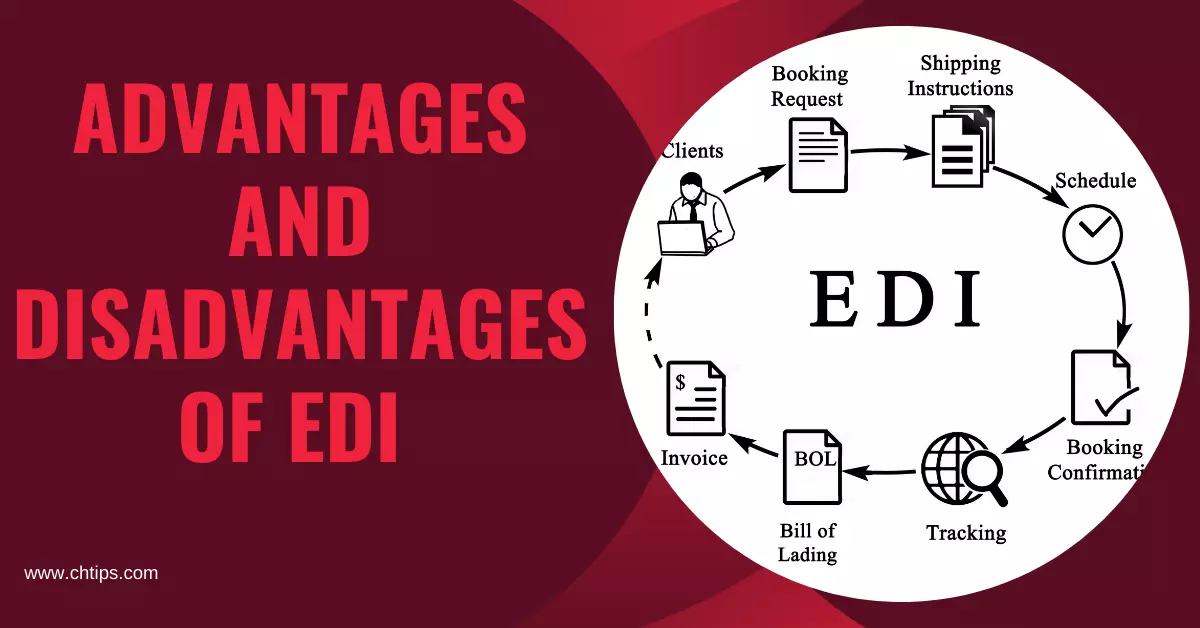In today’s post, we will learn the Advantages and Disadvantages of EDI | Merits and Drawbacks of EDI {Electronic Data Interchange} with its uses, benefits, types, and limitations.
The full form of EDI is Electronic Data Interchange.
| E | ELECTRONIC |
| D | DATA |
| D | INTERCHANGE |
The EDI is a standard way to transfer data and information between computers and computer networks.
Electronic data interchange is primarily used and accessed in eCommerce applications.
The EDI helps maintain data and records in the database, also used to track product shipments and invoices.
The online eCommerce industry is overgrowing.
The number of orders they are receiving daily is mesmerizing. Therefore, maintaining the complete records starting from customers’ personal details like name, address, and contact no.
The database also maintains records starting from product purchasing to selling.
Some of the examples of popular eCommerce companies are
Due to some excellent features of electronic data interchange in e-commerce, they are widely used and accessed.
What is EDI and How Does It Works?
The EDI is a communication system where data and information are transferred from one computer to another in a computer network.
The data and information don’t need any human effort or paperwork; these results produced are inexpensive.
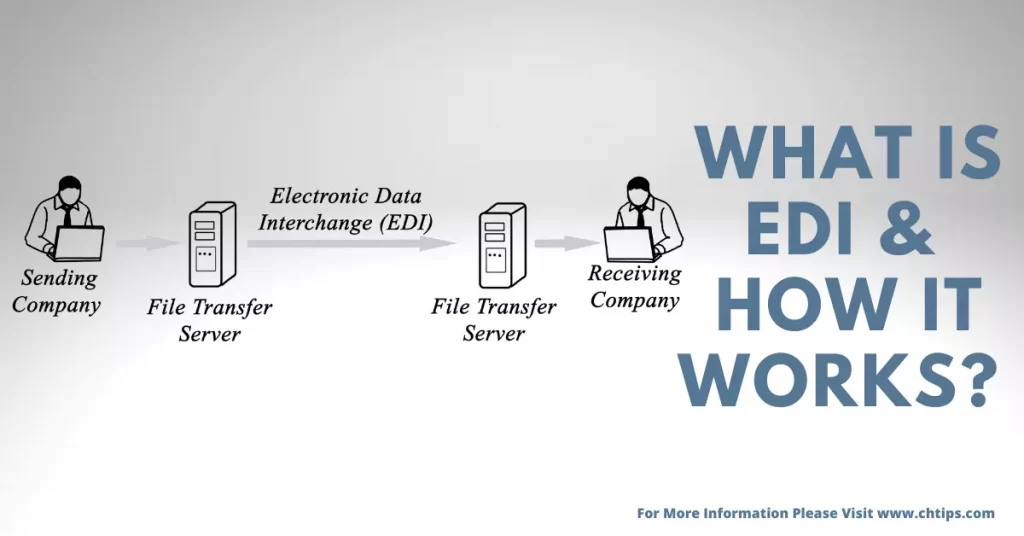
Today EDI is used in B2B and the e-commerce industry.
The EDI is responsible for data and information sharing; the eCommerce application needs massive data transferred.
Before transferring any data, the data and information are arranged in more conventional methods; later, these documents or data are converted into EDI format for more efficient sharing.
The data is transferred or shared using HTTP, HTTPS, and FTP.
The EDI {Electronic Data Interchange} are further categorized - Standards
- Translate Software
- Integration
- Communication (VAN)
In EDI, the computer or device which sends data is called the “sender“.
In contrast, the computer which receives data is called the “receiver“, and the medium in which data is transferred is called the “Transmission Medium.“
These devices or computers must be capable of sending and receiving information between them called “Data Communication.”
The data and information can be shared via Google Drive, email, or directly upload text, documents, spreadsheets, images, and videos.
The different types of Data Communications Components
- Transmitter/Sender
- Receiver
- Message / Data
- Medium
- Protocol
Advantages and Disadvantages of EDI | Merits and Drawbacks of EDI With Image and Diagram
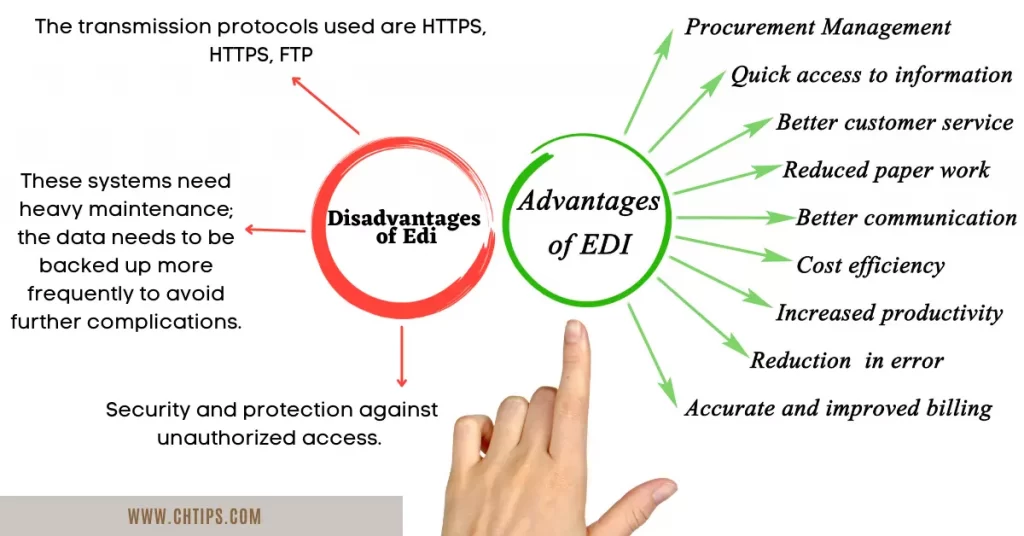
Benefits and Advantages of EDI in Points
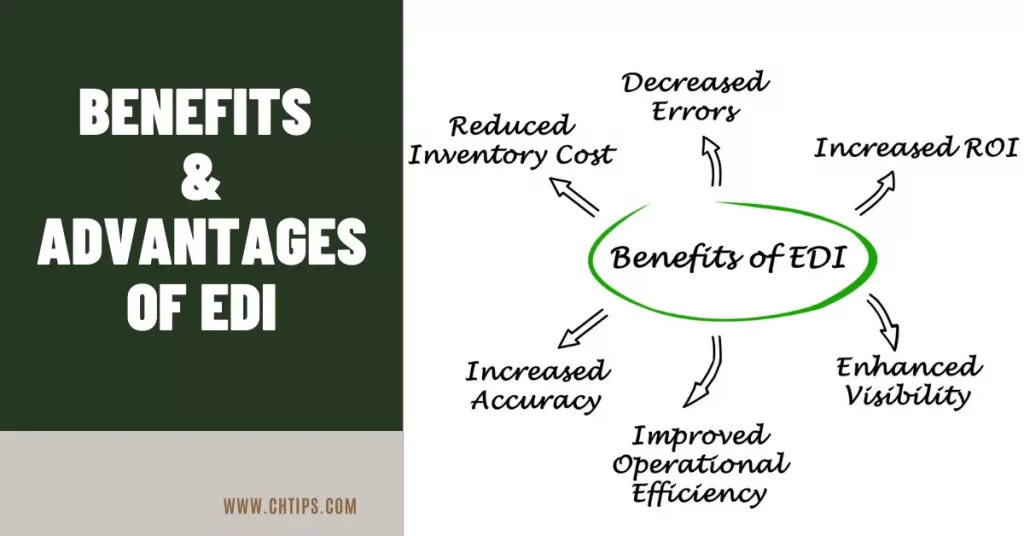
Let us discuss some of the merits and advantages of EDI in points with examples.
- The EDI {Electronic Data Interchange} helps businesses to grow and makes doing business easy compared to traditional and manual business. The data redundancy is significantly reduced and helps eliminate duplicate data and entries.
- As the EDI helps store data and information in a database reducing the uses and applications of paper.
- The EDI is inexpensive compared to traditional business as not cheap it saves time too.
- Speed is considered the significant advantage of EDI as the data transfer rate is relatively rapid. The speed helps in quick and instant payment, data storing and handling. The speed also allows businesses for faster processing and access.
- Data sharing is one of the merits of EDI. The main office of any company can share their data with their branch offices as quickly with just a few clicks.
- The errors and mistakes that are more consistent working with papers and traditional business are minimized when working and accessing EDIs.
- The accuracy that EDI possesses in business has changed the overall structure of performing business locally and globally.
- The data and information can be retrieved when the user requests or demands with just a few clicks.
- The data can be stored almost permanently in cloud storage, which is a safer location for data misplacing or theft.
- The EDI helps, improves, and enhances transaction security.
- EDI in small businesses is becoming more and more popular these days due to some of its silent features.
Drawbacks and Disadvantages of EDI With Examples
Let us discuss some of the demerits and disadvantages of EDI and its limitations in points with examples.
- The software is required to translate data into EDI format.
- The data or information can be sent or shared via the internet. The transmission protocols used are HTTPS, HTTPS, FTP, etc.
- The initial installation is quite expensive.
- One of the significant demerits or disadvantages of EDI is its security and protection against unauthorized access.
- These systems need heavy maintenance; the data needs to be backed up more frequently to avoid further complications.
- Cross-compatibility is also a limitation commonly found in EDI.
- They are expensive for small business owners.
- Privacy and Authorization is a critical disadvantage.
People Are Also Reading
- 20 Advantages and Disadvantages of Mobile Phones
- Characteristics of Fourth Generations of Computer
- Functions of Primary Memory in a Computer
- Different Types of Plotter
- Advantages and Disadvantages of Microcontroller
- Advantages and Disadvantages of Magnetic Disk
- Advantages and Disadvantages of Optical Disk
- Advantages and Disadvantages of Microprocessor
- 20 Advantages and Disadvantages of Mobile Phones
- Advantages and Disadvantages of CRT Monitors
- Advantages and Disadvantages of CCTV Cameras
- Advantages and Disadvantages of Blu-Ray Disk
- Advantages and Disadvantages of Fifth Generations of Computer System
- Advantages and Disadvantages of Bluetooth
- Advantages and Disadvantages of Thermal Power Plant
- Advantages and Disadvantages of Speakers
- Advantages and Disadvantages of Barcode Reader
- Advantages and Disadvantages of FTP {File Transfer Protocol}
- Advantages and Disadvantages of GUI
- Computer Basic Tutorials
Different Types of EDI { Electronic Data Interchange}
Electronic Data Interchange can be categorized into different types, which are mentioned below:
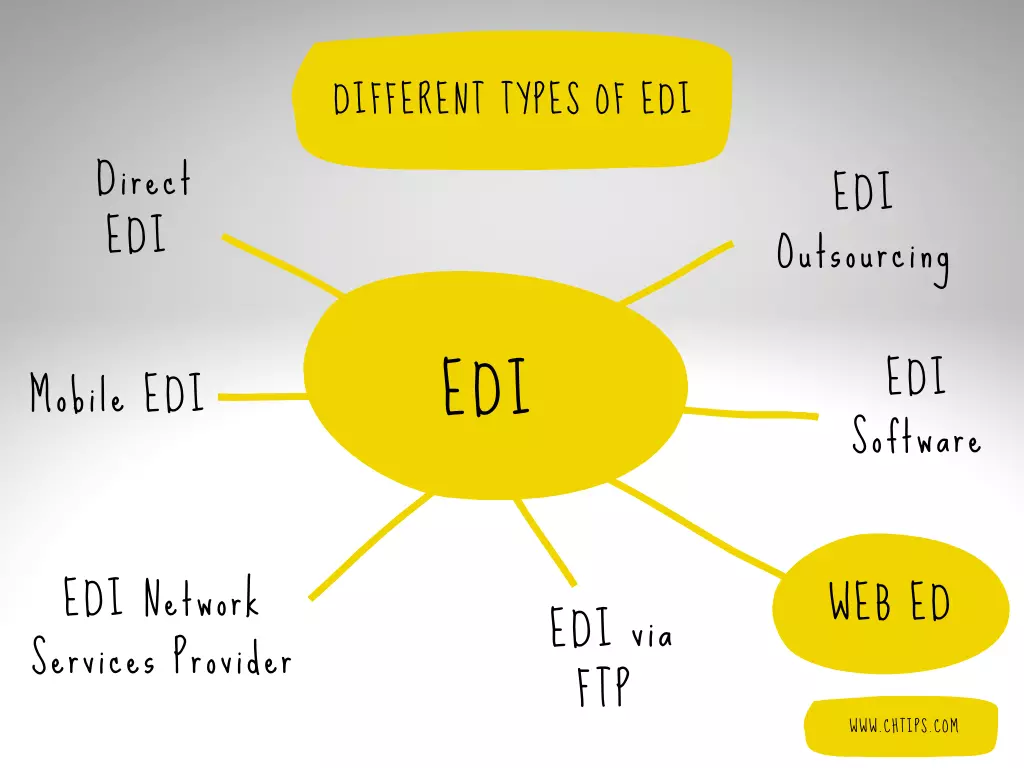
- Direct EDI / Point-to-Point
- EDI Outsourcing
- Mobile EDI
- EDI Software and Applications
- EDI Network Services Provider
- EDI via AS2
- EDI via FTP {File Transmission Protocol}
- WEB ED
Types of Security Components of EDI
- Trust-based Security
- Security through QB Security
- Password Schema
- Biometric System
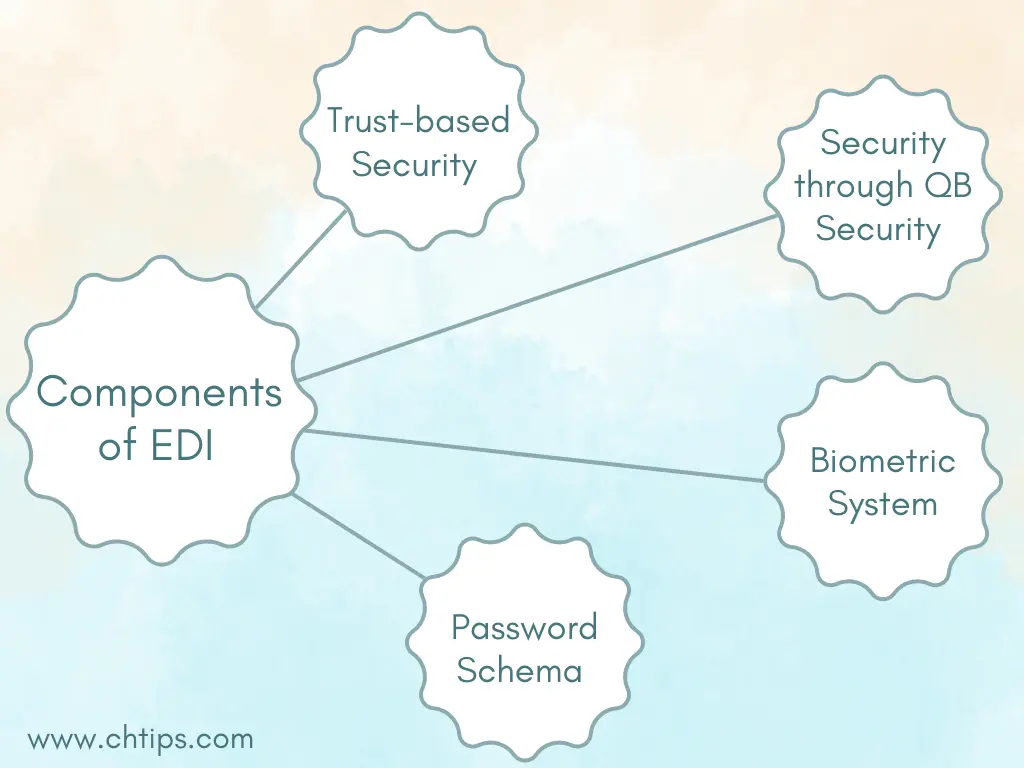
Frequently Asked Questions [FAQs]
What are the three components of EDI?
Business, data processing, and data communications.
What is another name for EDI?
Electronic Data Interchange.
What are the two formats of EDI?
Direct EDI/Point-to-point
EDI via VAN
How many layers are there in EDI?
four different layers.
4 Benefits of EDI
1. Inexpensive Operating Costs.
2. More Efficient.
3. More Reliable.
4. Paperless and environmentally friendly.
What is an example of EDI?
Purchase orders, invoices, shipping status, and payment information.
Get In Touch
I have also written and compiled some articles on computers and telecommunications, and please go through them.
I hope you will like reading it.
I hope that all the questions and queries related to the Advantages and Disadvantages of EDI | Merits and Drawbacks of EDI {Electronic Data Interchange} with its uses, benefits, types and limitations have been answered here in easy language.If you have any questions related to the Pros and cons of EDI with its merits and limitation.
Don’t hesitate to get in touch with me, and if you need to add, remove or update anything from the article, please let me know in the comment section or via email.
I will be more than happy to update the article. I am always ready to correct myself.
Please share this article with your friends and colleagues; this motivates me to write more related topics.
!!! Thank You !!!
